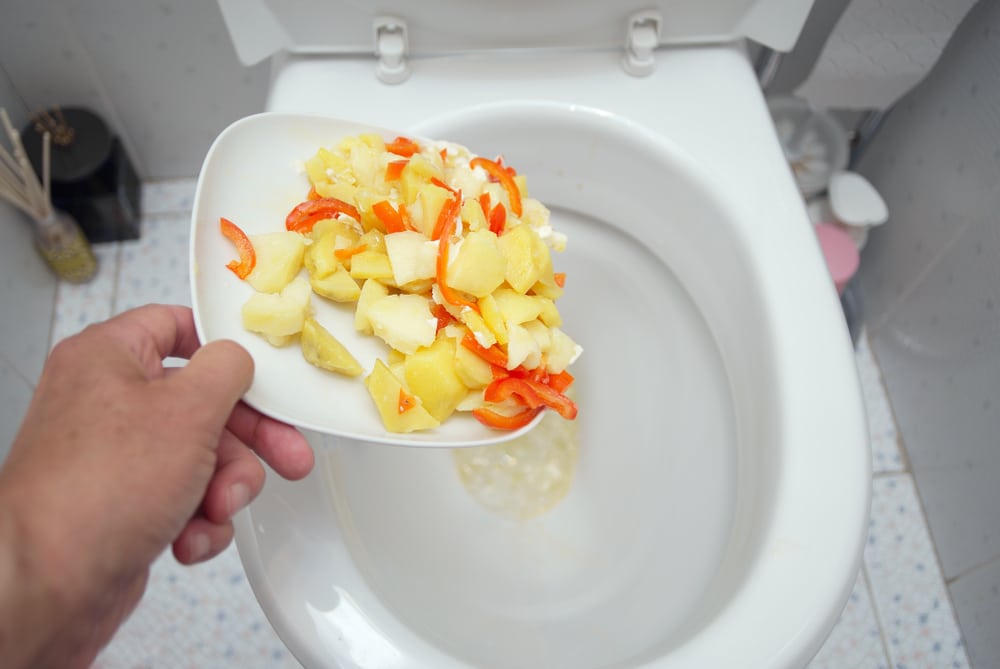Almost everyone is bound to have their own thoughts when it comes to Think Twice Before Flushing Food Down Your Toilet.

Introduction
Lots of people are often confronted with the problem of what to do with food waste, especially when it pertains to leftovers or scraps. One usual question that occurs is whether it's all right to flush food down the toilet. In this short article, we'll delve into the reasons that people might consider flushing food, the effects of doing so, and alternate approaches for appropriate disposal.
Reasons why people could think about purging food
Absence of understanding
Some people might not be aware of the prospective damage brought on by purging food down the commode. They may incorrectly think that it's a harmless technique.
Convenience
Flushing food down the bathroom might seem like a quick and simple service to taking care of undesirable scraps, specifically when there's no close-by trash bin readily available.
Idleness
In many cases, people may merely pick to flush food out of sheer idleness, without considering the consequences of their actions.
Effects of flushing food down the toilet
Environmental effect
Food waste that winds up in rivers can add to air pollution and damage marine ecosystems. Additionally, the water made use of to purge food can stress water sources.
Pipes problems
Flushing food can bring about clogged pipelines and drains, causing pricey pipes repairs and aggravations.
Sorts of food that should not be purged
Fibrous foods
Foods with fibrous structures such as celery or corn husks can get entangled in pipelines and cause obstructions.
Starchy foods
Starchy foods like pasta and rice can absorb water and swell, leading to clogs in pipelines.
Oils and fats
Greasy foods like bacon or food preparation oils need to never be purged down the toilet as they can solidify and trigger obstructions.
Proper disposal methods for food waste
Utilizing a waste disposal unit
For homes equipped with waste disposal unit, food scraps can be ground up and flushed with the plumbing system. However, not all foods are suitable for disposal in this way.
Recycling
Particular food packaging materials can be reused, minimizing waste and decreasing ecological influence.
Composting
Composting is an environmentally friendly method to dispose of food waste. Organic products can be composted and utilized to improve dirt for gardening.
The value of correct waste administration
Minimizing environmental damage
Proper waste administration techniques, such as composting and recycling, assistance reduce contamination and preserve natural deposits for future generations.
Protecting plumbing systems
By preventing the practice of flushing food down the bathroom, home owners can stop pricey pipes repair work and maintain the stability of their plumbing systems.
Final thought
Finally, while it might be appealing to flush food down the toilet for benefit, it is very important to comprehend the potential effects of this action. By adopting appropriate waste monitoring practices and throwing away food waste sensibly, people can add to much healthier pipes systems and a cleaner environment for all.
FLUSH FOOD DOWN THE TOILET?
FLUSHING FOOD CAN CAUSE BLOCKED DRAINS IN YOUR HOME
All of the plumbing fixtures in your home are connected to the same sewer pipe outside of your home. This outdoor sewer pipe is responsible for transporting all the wastewater from your home to the Council sewer mains. Even small pieces of food that go down the kitchen sink can cause problems for your sewer. It should therefore be obvious that flushing larger bits of food, such as meat, risks a clog in either the toilet itself or the sewer pipes. Flushing greasy food is even more problematic because oil coagulates when it cools, coating the interior lining of your pipes.
THE TOILET IS NOT A BIN
Food isn’t the only thing that people shouldn’t be flushing down the toilet. People use the toilet to dispose of all kinds of things such as tampons, makeup wipes, dental floss, kitty litter and even underwear. Water goes to great lengths to educate residents about the high costs and stress placed on wastewater treatment systems simply from people flushing the wrong stuff down the toilet. It costs taxpayers millions of dollars each year, and homeowners thousands in blocked drain repairs.
FLUSHING FOOD IS A WASTE OF WATER
Flushing food is a waste of our most precious resource - water. In June this year Level 1 water restrictions were introduced to protect water supply from drought conditions. Much of New South Wales continues to be affected by prolonged drought with recent figures revealing up to 97 per cent of the state remains in drought. Depending on whether you have a single or dual flush toilet, every single flush uses between five and 11 litres of water. In the current climate this is a huge amount of water to be wasting on flushing food that should be placed in the bin (or better yet, the compost).
https://www.jabplumbingsolutions.com.au/blog/can-you-flush-food-down-the-toilet

I found that article about Think Twice Before Flushing Food Down Your Toilet when doing a lookup on the web. Sharing is nice. Helping others is fun. Thanks a lot for your time. Please come visit our blog back soon.
Schedule Appointment Now
Comments on “Is it Rational to Dispose of Food in the Toilet?”